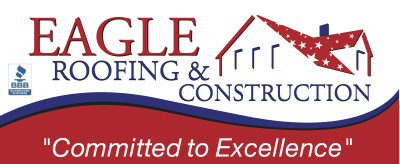The purpose and structural integrity of a shelter’s roof is of the utmost importance, as it provides its inhabitants with a basic need – protection from nature’s elements. However, when did roofing become more than just protection and evolve into a means of architectural art and design?

Here are a few ways roofing styles have evolved throughout history.
The Beginnings of Roofing
According to Build Direct, roofing designs and trends through history dates back as early as 3000 B.C. when Chinese civilizations used handmade clay roof tiles and the Roman and Greek civilizations employed slate and tile during the first century. Later, thatched roofing and wooden shingles became popular materials for roofing designs in Western Europe.
The advancement in reinforcing the physical integrity of roofing can be credited to King John during his reign in the twelfth century to help decrease the amount of fires that occurred in the overcrowded cities. Residents were instructed to replace their thatched roofing with clay tiles. Eventually, nearly a century later concrete tiling was first utilized.
Let’s delve further into how America’s roofing system was influenced by Western Europe and how it has evolved into what it is today.
Evolution of Roofing Styles in America
As the first settlers of New England migrated to what is now the northeastern region of the United States, roofing design and aesthetic was not a top priority. Whatever was readily available and could withstand the diverse weather conditions were what made the cut when constructing the first settlements. As advancements in technology were made, roofing styles evolved throughout the centuries.
The first architectural roofing style, called the Cape Cod, was made popular in the seventeenth century, and was characterized as a simple, box-like design that housed the chimney in a central location of the home to provide effective heating. This style eventually progressed into what was called the Colonial style, known as Saltbox Colonial. This design included a steep slope that was “shed-like” in appearance.
By the eighteenth century, the Georgian style of structural design was made widely popular by the social elite and included gambrel and hipped roofing designs. Gambrel roofing, or Dutch Gambrel, is described as a double-sided roof with two slopes on either side. Hipped roofs had multiple variations depending on house designs, but all included roof sides that gradually sloped downward.
So, what are some current popular roofing materials and designs? This next section will go into further detail about styles and other things to consider for your next roofing project.
Current Roofing Trends
Many homeowners today want a roof that is aesthetically pleasing, relatively cheap to maintain, and long-lasting. Styles vary from historical time periods to modern, and the materials have a wide range of cost and levels of environmental friendliness.
One roofing material that is regaining popularity is metal. Today’s metal roof can be crafted to mimic the appearance of other popular roofing materials, and it is highly cost-effective. Metal roofs are fire resistant, low-maintenance, and energy efficient. While the upfront cost may seem steep compared to other roofing materials, the savings over time greatly exceeds those of its counterparts.
A fashionable and “green” choice for today’s homeowner is sod roofing. This roofing material was made popular by Scandinavian countries during the seventeenth century. Advancement since that time has made it a viable choice to protect a home from wind and aid in water distribution and drainage. Not only is this roofing material contemporary and pleasing to the eye, but it also serves as a wonderful means of insultation and lasts a long time when installed correctly.
A budget-friendly option for homeowners is composition roofing. Composition shingles range in price points and is widely popular due to the diversity of styles and materials. It is fairly simple to install and can even be positioned over an established roof. While these do tend to have to be replaced with different weather conditions and are easily damaged from higher temperatures, composition shingles are rated high for fire-protection, which are all factors to consider when comparing other roofing materials.
We hope you enjoyed learning about the evolution of roofing throughout history. To answer any questions about your roofing needs, be sure to reach out to one of our experts here at Eagle Roofing and Construction for your next roofing project!
